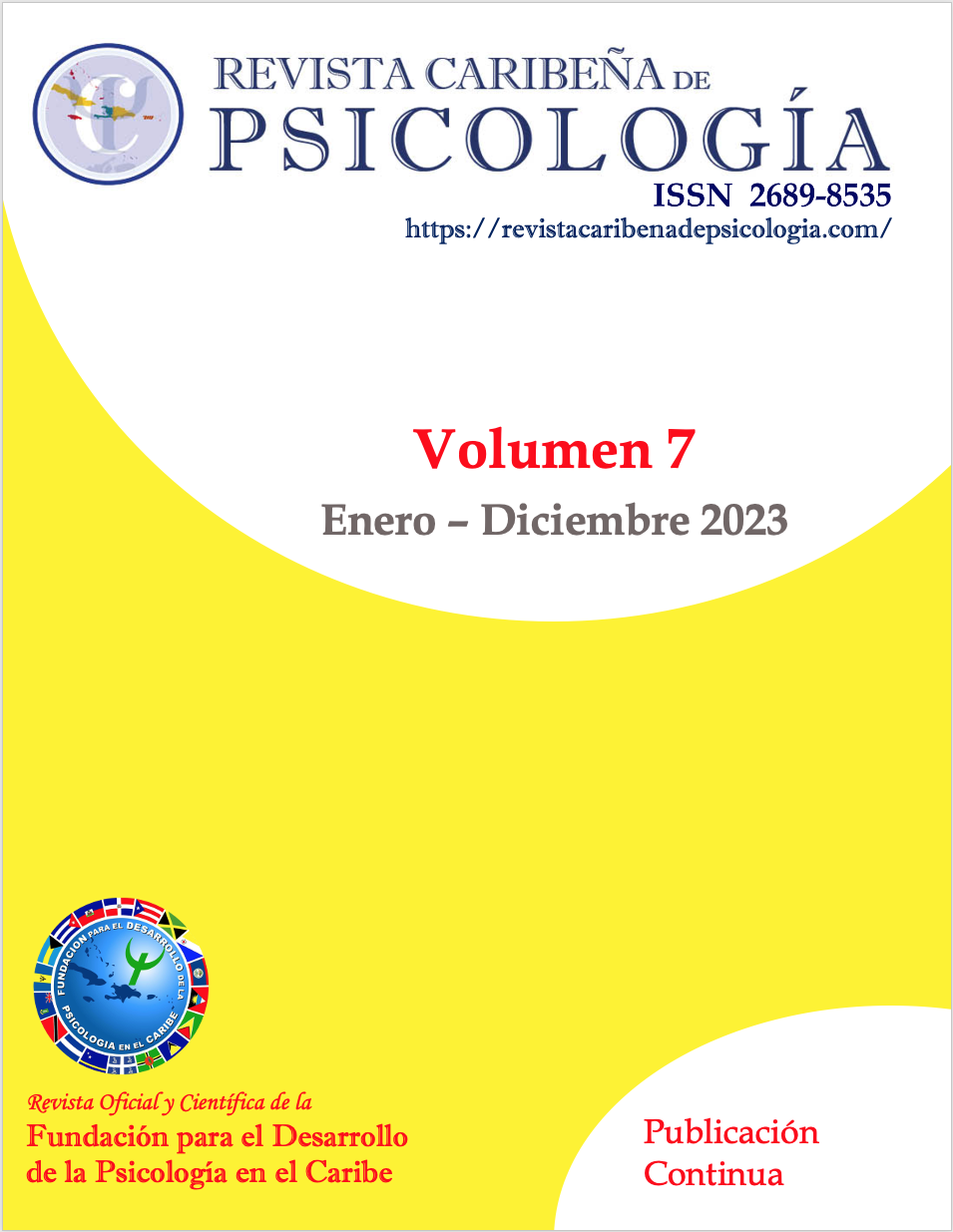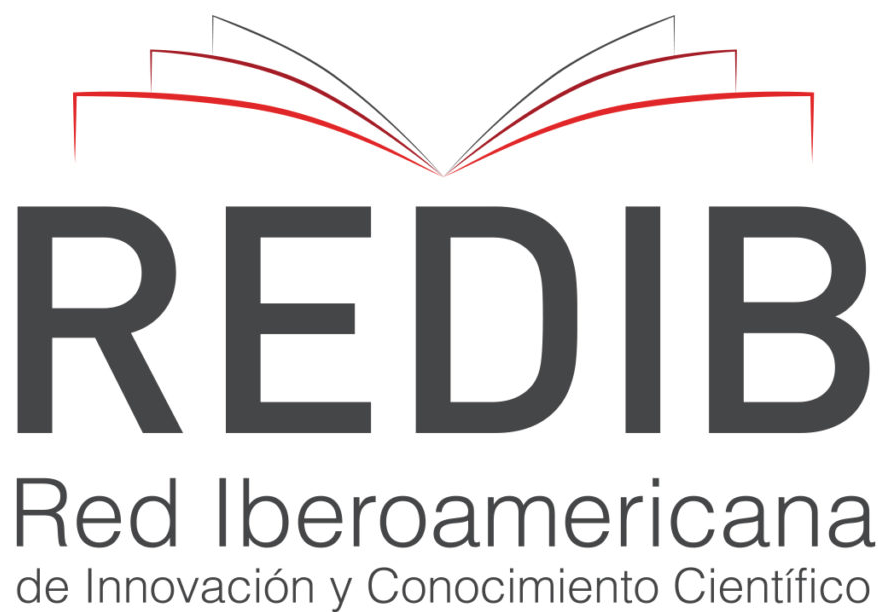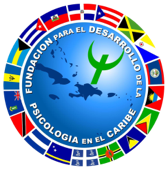Relationship between Family Violence, Perceived Support, and Family Functioning in Communities with High Levels of Violence
DOI:
https://doi.org/10.37226/rcp.v7i1.7117Keywords:
Community violence, Family functioning, Family violence, Perceived supportAbstract
The scientific literature has shown an association between community violence and socioeconomic inequality with domestic violence, poor social-financial support, and poor family functioning. The purpose of this study was to present data on the relationship between family violence, family functioning and perceived support to contextualize the understanding of these factors and contribute to the improvement of various community services. This study is quantitative, cross-sectional, and correlational. The sample consisted of 91 caregivers of minors (6-12 years old), residents of public housing units in Puerto Rico who reported having been exposed to community violence. A moderate, negative, and significant association was found between family functioning and domestic violence. We found a moderate, positive, and significant correlation between perceived support and family functioning. The multiple linear regression model explained 35% of the variance, suggesting that perceived support and domestic violence predict family functioning. The mediating role of perceived support between family functioning and domestic violence was significant. Our findings strengthen health approaches that promote the monitoring of family functioning to understand and promote the well-being of families, emphasizing factors such as social, emotional, and economic support.
References
Almenares Aleaga, M., Louro Bernal, I., & Ortiz Gómez, M. (1999). Comportamiento de la violencia intrafamiliar. Revista Cubana de Medicina General Integral, 15(3), 285-292. http://scielo.sld.cu/pdf/mgi/v15n3/mgi11399.pdf
Banovcinova, A., Levicka, J., & Veres, M. (2014). The impact of poverty on the family system functioning. Procedia - Social and behavioral sciences, 132, 148-153. https://doi.org/10.1016/j.sbspro.2014.04.291
Bronfenbrenner, U. (1987). La ecología del desarrollo humano: Expe-rimentos en entornos naturales y diseñados. Paidós. La Ecología del Desarrollo Humano. https://bibliotecadigital.mineduc.cl/handle/20.500.12365/18032
Centro Nacional de Recursos FRIENDS. (2021). Encuesta de factores protectores en español. Instituto de Investigación Educativa y Servicio Público. Universidad de Kansas. https://friendsnrc.org/wp-content/uploads/2020/02/S-PFS-User-Manual-in-Spanish.pdf
Chen, W., Corvo, K., Lee, Y., & Hahm, H. (2016). Longitudinal Trajectory of Adolescent Exposure to Community Violence and Depressive Symptoms Among Adolescents and Young Adults: Understanding the Effect of Mental Health Service Usage. Community Mental Health Journal, 53(1), 39-52. https://doi.org/10.1007/s10597-016-0031-5
Copp, J., Giordano, P., Longmore, M., & Manning, W. (2016). The Development of Attitudes Toward Intimate Partner Violen-ce: An Examination of Key Correlates Among a Sample of Young Adults. Journal of Interpersonal Violence, 34(7), 1357-1387. https://doi.org/10.1177/0886260516651311
Díaz-Marrero, K. (2015). Percepción del impacto del encarcelamiento en el funcionamiento de familias que viven en Puerto Rico. [Disertación doctoral no publicada]. Universidad Carlos Albizu, San Juan, Puerto Rico.
Díaz Cárdenas, S., Arrieta Vergara, K., & González Martínez, F. (2015). Violencia intrafamiliar y factores de riesgo en mujeres afrodescendientes de la ciudad de Cartagena. Revista Clínica de Medicina Familiar, 8(1), 19-30. https://dx.doi.org/10.4321/S1699-695X2015000100004
Doidge, J., Higgins, D., Delfabbro, P., Edwards, B., Vassallo, S., Toumbourou, J., Segal, L. (2016). Economic predictors of child maltreatment in an Australian population-based birth cohort. Children and Youth Services Review. http://dx.doi.org/10.1016/j.childyouth.2016.10.012
Dubé, C., Gagné, M., Clément, M., & Chamberland, C. (2018). Community Violence and Associated Psychological Problems Among Adolescents in the General Population. Journal of Child & Adolescent Trauma, 11(4), 411-420. https://doi.org/10.1007/s40653-018-0218-8
Fuentes Aguilar, A.P., & Merino Escobar, J.M. (2016). Validación de un instrumento de funcionalidad familiar. Ajayu. Órgano de Difusión Científica del Departamento de Psicología de la Univer-sidad Católica Boliviana "San Pablo", 14(2), 247-283. https://www.redalyc.org/articulo.oa?id=461546437003
Gallegos-Guajardo, J., Ruvalcaba-Romero, N. A., Castillo-López, J., & Ayala-Díaz, P. C. (2016). Funcionamiento familiar y su rela-ción con la exposición a la violencia en adolescentes mexica-nos. Acción Psicológica, 13(2), 69-78. https://doi.org/10.5944/ap.13.2.17810
González, E., De la Cuesta, D., Louro Bernal, I., & Bayarre, H. (1997). Funcionamiento familiar. Construcción y validación de un instrumento. Ciencias de la salud humana, 4, 63-66. https://dialnet.unirioja.es/servlet/articulo?codigo=5128785
Gorman-Smith, D., Henry, D., Tolan, P. (2004). Exposure to Community Violence and Violence Perpetration: The Protec-tive Effects of Family Functioning. Journal of Clinical Child & Adolescent Psychology, 33(3), 439-449. https://doi.org/10.1207/s15374424jccp3303_2
Gudiño, O., Nadeem, E., Kataoka, S., Lau, A. (2011). Relative impact of violence exposure and immigrant stressors on La-tino youth psychopathology. Journal of Community Psychology, 39(3), 316-335. https://doi.org/10.1002/jcop.20435
Hardaway, C., Sterrett-Hong, E., Larkby, C., & Cornelius, M. (2016). Family Resources as Protective Factors for Low-Income Youth Exposed to Community Violence. Journal of Youth And Adolescence, 45(7), 1309-1322. https://doi.org/10.1007/s10964-015-0410-1
Instituto de Estadísticas de Puerto Rico. (2019). En pobreza el 50% o más de la población en 36 Municipios de Puerto Rico. San Juan. https://censo.estadisticas.pr/sites/default/files/Comunicados/CP_2014-2018_PRCS_12_19_2019.pdf
Krug, E. G., Dhalberg, L., Mercy, J. (2002). World report on violence and health. Organización Mundial de la Salud. http://apps.who.int/iris/bitstream/handle/10665/42495/9241545615_eng.pdf;sequence=1
Medellín, M., Rivera, M.E., López, J., Kanán, G., Rodríguez, A. (2012). Funcionamiento familiar y su relación con las redes de apoyo social en una muestra de Morelia, México. Salud Mental, 35(2), 147-154. http://www.scielo.org.mx/scielo.php?script=sci_arttext&pid=S0185-33252012000200008&lng=es
Morgan, R. E., & Truman, J. L. (2020). Criminal Victimization, 2019. U.S. Department of Justice. https://www.bjs.gov/content/pub/pdf/cv19.pdf
Ozer, E., Lavi, I., Douglas, L. & Price Wolf, J. (2015). Protective Factors for Youth Exposed to Violence in Their Communities: A Review of Family, School, and Community Moderators. Journal of Clinical Child & Adolescent Psychology, 0(0), 1–26. https://doi.org/10.1080/15374416.2015.1046178
Pérez-Pedrogo, C., Sánchez-Cesáreo, M., Martínez-Taboas, A., Colón-Jordán, H., & Morales-Boscio, A. (2016). Violencia co-munitaria: Programas basados en la evidencia como alternati-va para su mitigación. Revista Puertorriqueña de Psicología, 27(1), 26-42. https://www.repsasppr.net/index.php/reps/article/view/276
Pinheiro, P. S. (2006). Informe mundial sobre la violencia contra los niños y niñas. UNICEF. https://violenceagainstchildren.un.org/sites/violenceagainstchil-dren.un.org/files/document_files/world_report_on_violence_against_children_sp.pdf
Procel-González, M. J. (2017). Funcionalidad familiar y su relación con exposición a violencia intrafamiliar en adolescentes del bachillerato zona 7 Ecuador 2016 [Tesis, Universidad Nacional de Loja]. Repositorio digital institucional. https://dspace.unl.edu.ec/jspui/handle/123456789/18256
The National Child Traumatic Stress Network. (2016). Community Violence. https://www.nctsn.org/what-is-child-trauma/trauma-types/community-violence
Thompson, R. A., & Goodvin, R. (2016). Social support and deve-lopmental psychopathology. En D. Cicchetti (Ed.), Develop-mental psychopathology: Risk, resilience, and intervention (págs. 86–135). John Wiley & Sons, Inc. https://doi.org/10.1002/9781119125556.devpsy403
U.S. Census Bureau. (2022). U.S. Census Bureau quickfacts: Puerto Rico. https://www.census.gov/quickfacts/fact/table/PR/IPE120220
U.S. Department of Health & Human Services, Administration for Children and Families, Administration on Children, Youth and Families, Children’s Bureau. (2021). Child Maltreatment 2019. https://www.acf.hhs.gov/cb/research-data-technology/statistics-research/child-maltreatment
Valdez-Pimentel, Y.M., Martínez-Taboas, A., & Pedrosa, O. (2020). Depresión, estrés postraumático y estrategias de afron-tamiento en una muestra de adultos víctimas de crimen resi-dentes en Puerto Rico. Revista Caribeña de Psicología, 4(3), 217-228. https://doi.org/10.37226/rcp.v4i3.5209
Waters, H., Hyder, A., Rajkotia, Y., Basu, S., Rehwinkel, J.A., Butchart, A. (2004). The economic dimensions of interpersonal vio-lence. Department of Injuries and Violence Prevention, Orga-nización Mundial de la Salud. https://apps.who.int/iris/bitstream/handle/10665/42944/9241591609.pdf?sequence=1
Organización Mundial de la Salud (1996). Forty-ninth World Health Assembly, Geneva, 20-25 May 1996: Resolutions and decisions, annexes. World Health Assembly, 49. https://apps.who.int/iris/handle/10665/178941
Organización Mundial de la Salud. (2020). Global status report on preventing violence against children. Geneva. https://www.who.int/publications/i/item/9789240004191
Zavala-Zegarra D., Bezares-Salinas M., Santiago-Torres, M., Ca-rrasquillo-Sánchez G., Martínez-Sánchez T. (2020). Muertes Violentas en Puerto Rico, 2017. Instituto de Estadísticas de Puerto Rico., San Juan, PR. https://estadisticas.pr/files/Publicaciones/Informe%20Muertes%20Violentas%202017_2020%200710-CEE.pdf
Zuñeda, A., Llamazares, A., Marañon, D., & Vázquez, G. (2016). Características individuales y familiares de los adolescentes inmersos en violencia filio-parental: La agresividad física, cohesión familiar y el conflicto interparental como variables explicativas. Revista de Psicopatología y Psicología Clínica, 21(1), 21-33. https://doi.org/10.5944/rppc.vol.21.num.1.2016.15021
Downloads
Published
How to Cite
Issue
Section
License
Copyright (c) 2023 Laura M. Alvarado Chamorro, Aysha Concepción Lizardi, Aida Jiménez Torres, José Martínez González

This work is licensed under a Creative Commons Attribution 4.0 International License.







